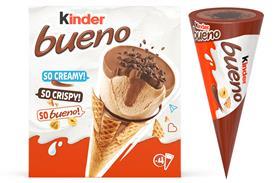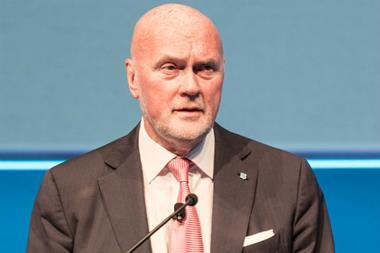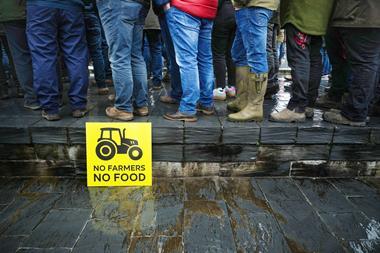What value do loyalty cards have for retailers? Do they really generate loyalty? Why do chains retain them when Asda, Morrisons and now Safeway do quite happily without? Sarah Dowding reports on the pros and cons of those bits of plastic
The debate goes on as to whether loyalty cards are a useful tool. Approximately 75% of all adults have at least one loyalty card and nearly 50% have more than two cards.
When loyalty cards first came out, they were offering something, but now that today's savvy shopper collects them all, they stop being a loyalty tool. So is there a future for loyalty cards?
Safeway recently took the decision to axe its ABC card after chief executive Carlos Criado-Perez described it as "a flashy, worthless bit of plastic". Is Safeway's scrapping of the card a symptom of the problems it faces as a chain or a true indictment of the loyalty card charade?
Safeway still insists that the card was useful but says there was only so much it could do with the customer data. The company estimates it will save £50m this year alone now the loyalty card has gone and claims it will all be passed on to the customer.
A Mintel survey found that Morrisons has the highest customer loyalty and yet it doesn't have a loyalty card.
Also, only 10% of shoppers say such cards actually influence their shopping behaviour.
A recent report, How Britain Shops 2000, says loyalty cards don't instil loyalty in the average shopper and the grocery sector has a below average loyalty rating.
The main factors of store choice and therefore loyalty are firstly convenience and then price. Some of the world's most successful retailers, including Wal-Mart and Asda, don't have such schemes and don't appear to suffer.
"The loyalty card still has a value in that it rewards your best customers, but it is not the be all and end all," says marketing agency TBWA GGT direct chief executive Mike Cornwell who has recently launched the House of Fraser loyalty card Recognition.
Loyalty cards do help retailers target their existing customers better and therefore increase profit, but they rarely help to win new customers.
They also help supermarkets to identify their most profitable customers, which account for about 30% of all customers.
On the other hand, Tesco claim it has saved £500m using the data collected from the Clubcard, but as a database tool, cards pose huge challenges.
Can they be used to find genuinely useful insights about customer purchasing behaviour?
Do the benefits cover the cost of data mining and decision implementation?
Are the benefits better than using the money elsewhere?
Sainsbury is reviewing its Reward card offering and wants to have more partners join the scheme to give discounts for the Reward points. This encourages card take-up it already has the largest issue with 14 million cards.
Since the launch in 1996, Sainsbury is estimated to have spent £500m on loyalty, including more than £100m operating the card.
The outgoings to partners are £100m a year but Sainsbury reaps little benefit as the data and information collected are not being used effectively.
However Sainsbury can't afford to abandon the Reward card, as this would cost more than £150m, and it would be handing Tesco a major marketing coup.
Now that Wal-Mart has entered the market, loyalty will probably be battled for on price, and Tesco may ditch the Clubcard and just go for Every Day Low Pricing instead.
Price promotions can have a negative effect on loyalty of the brand, and are the brand equivalent of drugs. Once the brands and customers are addicted, then it is hard to wean them off and focus attention on real brand building activities.
Forty five million cards are actively used in the UK's top seven schemes, and Boots has the highest number of regular users with 9.5 million.
Boots will shortly be launching a dual credit and loyalty card in conjunction with Egg.
Waitrose marketing director Mark Price says: "It has been proved that reward cards don't increase spend or increase loyalty. Boots spends £54m setting up its scheme, yet sales went up by less than 0.3%."
With this many card users, loyalty cards are unlikely to disappear overnight, but where tangible cards may be in decline, the trend is opposite in the online world. Webmiles has over 100 partners and aims to have one million members by the end of this year. Beenz.com calls itself the global currency and has more than one million members, and mypoints.com is the "world's largest Internet loyalty and permission marketing programme".
With figures like these, loyalty is still a useful marketing tool to companies, but it is how the information is used that is the key to their success.
{{LEADING EDGE }}
Close menu
- Home
- Retail & Wholesale
-
Products & Suppliers
- Back to parent navigation item
- Products & Suppliers
-
Product Categories:
- Back to parent navigation item
- Product Categories:
- Alcoholic drinks
- Bakery
- Cereals & breakfast
- Cheese
- Chicken & poultry
- Chocolate
- Confectionery
- Crisps, nuts & snacks
- Dairy
- Fish
- Fresh produce
- Frozen
- Household
- Meat
- Own Label
- Sauces & condiments
- Seasonal
- Soft drinks
- Vaping
- Vegan & plant-based
- World foods
- Suppliers
- People
- Reports & Data
-
Topics A-Z
- Back to parent navigation item
- Topics A-Z
-
Popular topics:
- Back to parent navigation item
- Popular topics:
- Cost of living crisis
- Crime
- Deposit Return Schemes
- Finance
- Government & Regulation
- Health
- Inflation
- Loyalty
- Marketing
- Mergers & Acquisitions
- New Product Development
- Sourcing
- Supply chain
- Sustainability & environment
- Technology
- Ultra Processed Foods
- Vaping
- A-Z all topics
- Content by type:
- Events
- Subscribe now
Sign in to comment on this article
Not logged in before? Register for FREE guest access today.
You will be able to:
- Read more stories
- Receive daily newsletters
- Comment on stories
Advert















No comments yet